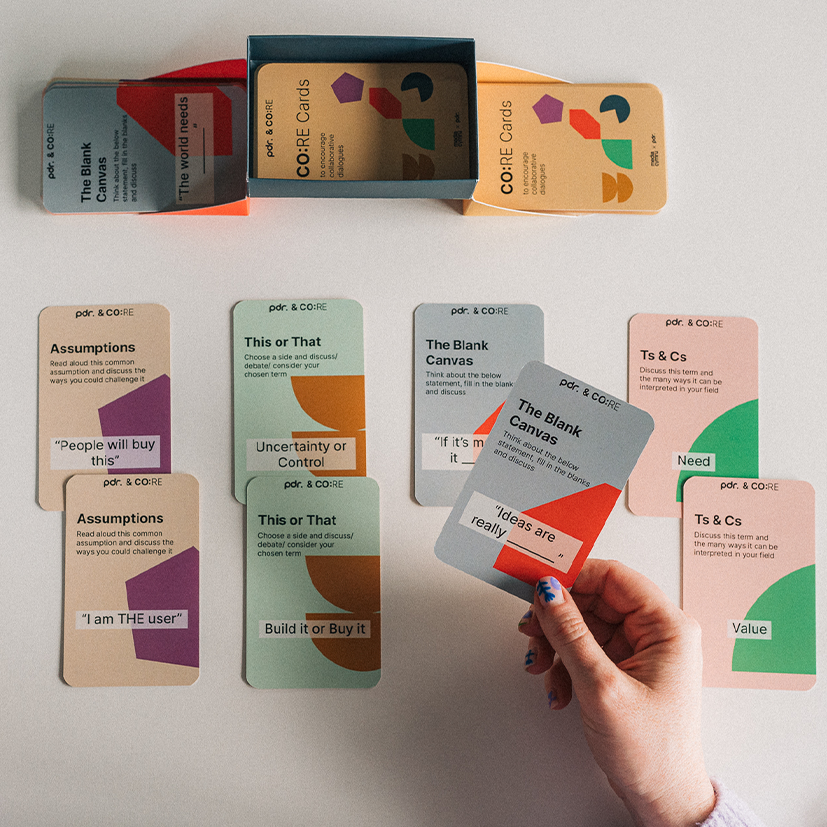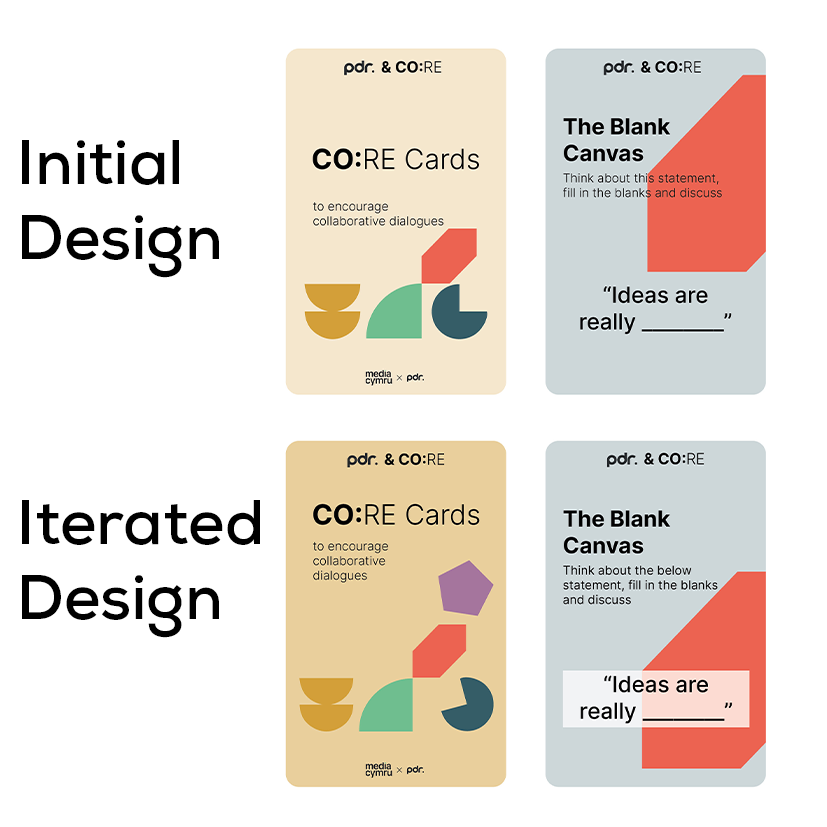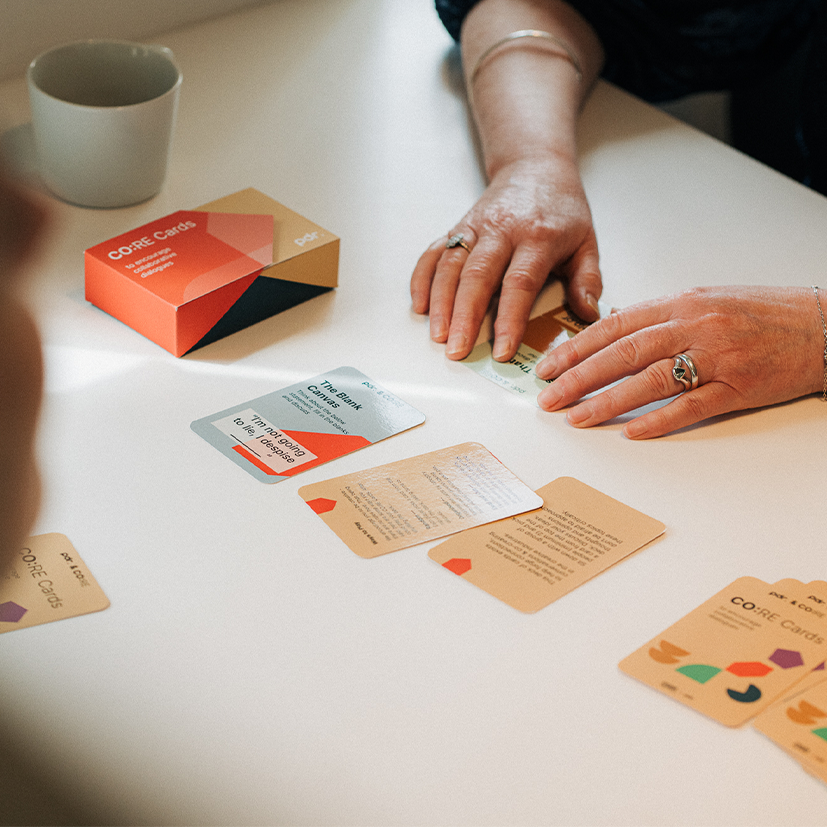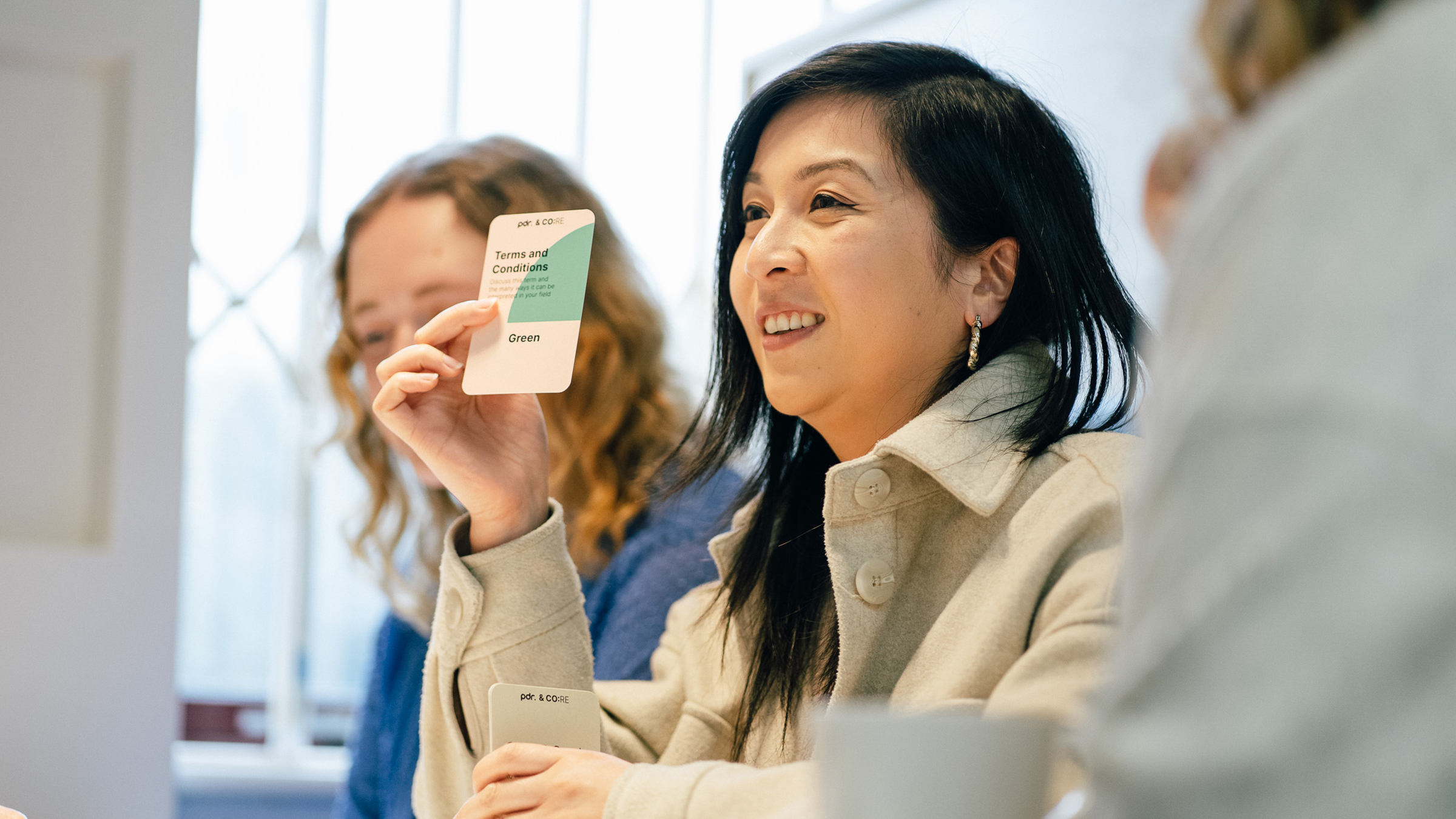CO:RE Cards: Content & Aesthetics
In this 2nd article as part of our series on CO:RE Cards, 3 members of our Media Cymru team, Jo Ward, Safia Suhaimi and Siena DeBartolo, discuss the process of developing the concept into a working resource for PDR and CO:RE sessions.
What are CORE cards?
CO:RE Cards: a COllaborative and REflective deck designed to encourage discussions around ‘language’ surrounding R&D and innovation. In doing so it helps to foster dialogues, mutual learning and collaboration among creative practitioners based in Wales.
Why did we create them?
We wanted to offer something with additional value to these meetups by facilitating conversations and allowing them to engage with other creatives that have experienced similar R&D journeys. This is where the CO:RE Cards and PDR & CO:RE series came into fruition. Learn more about objectives behind CO:RE Cards.

What did we want them to achieve?
Jo: We wanted to help people become more comfortable talking about R&D and Innovation terms, share insights into their practice and do this with people they might not have spoken to before. That’s a big ask for people! But we have proven our theory – using the cards helps break down those barriers to engagement and prompts people to develop understanding through conversations. They’ve been shown to change people’s perceptions based around their experiences being ‘greater’ than others, and that there are commonalities and connections between people that they would not have made without these conversations being facilitated by the CO:RE deck.
Safia: It was refreshing to see that people use the cards to share their own personal struggles and challenges in R&D… We felt that PDR & CO:RE provided a ‘safe space’ for them to delve into their lived experiences, memories, mental well-being and more. What was intended as just ‘dialogues around R&D’ turned into a more meaningful exchange of different experiences.
How did we create the content?
Safia: Members of the team came together to start ideating on their past innovation delivery experiences with creative industries. We looked at commonalities and themes that arose from those interactions. Through this we were able to create 4 categories and the additional ‘write on me’ cards for players to add their own topics.
We wanted to use the common phrases, assumptions, and things that people say about innovation and put these in front of people to see how they would react or respond! It was great to know how many creatives came to us to say how they relate to these prompts, and it was as if we had ‘read their minds’!
What constraints did we work within for the look and feel of the deck?
Siena: We had to work within specific Media Cymru brand guidelines for the graphic design of the cards, so I spent time pushing them to the limits to give the cards their own visual language. We chose five of the more vibrant brand colours and adjusted their opacity, for higher contrast between the background and the shapes.
In the first iteration of the deck, we discovered through testing that the hierarchy (what the eye is drawn to first) was not entirely clear, and the text that prompts the discussion was competing with the title and instructions on the card. After some thought we iterated, and decided to highlight the text which needed most consideration in gradient boxes. In version two we also increased the number of cards, from 26 to 45, to allow for more play and conversation, before repeating cards.
When it came to print time, we played around with matte and glossy papers. We considered a lot, like the environmental impact of glossy (plastic coating) and matte paper. But in the end, we weighed that the longevity of the cards, and the ability to write on them with whiteboard markers, would take precedence. The cards we finalised are very durable, and after a lot of handling (around tea, coffee, and cake) have stood up against the wear and tear.

How have we iterated?
Safia: We initially tested the deck with creatives on the Media Cymru pipeline in several PDR & CO:RE sessions, which provided us with iterations for better legibility and identification. The improved version has been tested in further sessions with positive results. Our ongoing use with creatives will keep providing us with more insights, as we continue to make the deck better for future delivery.
What’s been the response so far?
Jo: People have had conversations they wouldn’t have normally had with people they wouldn’t normally speak to – for me, that’s an excellent response. Some of the terms might be interpreted in a way that they disagree with – again, great! If that prompts you to have an open discussion as to why you react to something, I think that is an excellent response. The language is evidence-based and there is no ‘right or wrong’ answers... not everything is as binary as it seems.


